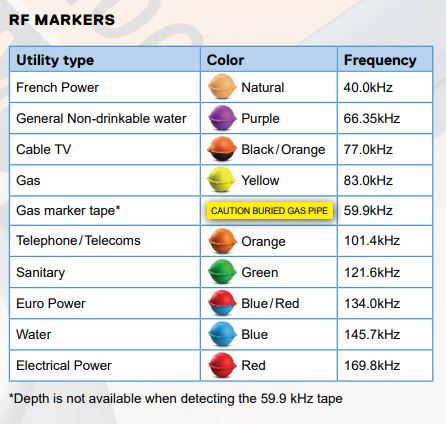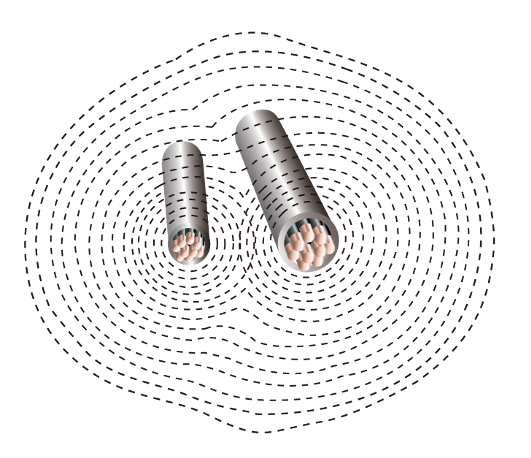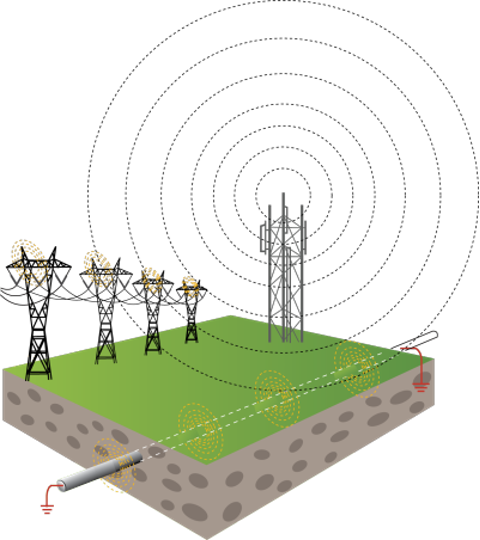 Radio and
Radio and  Power Mode Pipe and Cable Locators
Power Mode Pipe and Cable Locators
Radio and Power Mode P/C Locators
These locators detect the electromagnetic fields naturally present around utilities that are energized or in use. The radio mode is designed to pick up radio frequency signals that may be re-radiated by metallic utilities, while the power mode specifically detects the standard frequencies used by electrical power lines. These technologies are particularly useful for quickly locating live utilities without the need for a transmitter.
Most Utility locators that refer to power and passive modes have 50/60 Hz and 100/120 Hz capabilities. For example: The Subsite utility locator (UTILIGUARD 2) has frequencies of 50Hz, 60Hz, 100Hz, 120Hz, 150Hz, 180Hz. This specific model allows upto 100 custom frequencies between 256Hz to 83ktz.
Power Mode locates conductors with a 50/60 Hz frequency. The Receiver alone detects the electromagnetic fields emitted by buried energized lines conducting currents. The conductor can be getting these frequencies from other sources such as a near by transmitter emitting 50Hz/60 Hz, or near by power lines that emit 50Hz/60 Hz frequencies.
50hz and 60hz are the two common frequency standards used in electrical power systems worldwide. The choice of frequency often depends on the country's power system design and the equipment used.
Countries that use 60Hz: North America, South America, and some parts of Asia.
Some local regions use different frequencies , such as Japan.
-East Japan 50 Hz (Tokyo, Kawasaki, Sapporo, Yokohama, and Sendai)
-West Japan 60 Hz (Okinawa, Osaka, Kyoto, Kobe, Nagoya, Hiroshima).
Countries that use 50hz: Europe, Africa, and parts of Asia, Including Australia, China, and Germany.
It's important to note that the choice of frequency can affect compatibility with utility locator based on your specific region.
Radio Mode locates 100/120 Hz passive frequencies. The Receiver to detect radio waves coming from cellular towers, radio stations, etc that transmit onto conductive utility lines back to the receiver.
Radio Mode Pipe and Cable Locators
Radio mode detects broadcast signals that originate from radio transmitters. These signals penetrate the ground and are re-radiated by buried conductors.
However, depending on your location, these signals may not be present.
Nearby electrical grid or power lines that radiate (50/60Hz) signals that then induce onto another utility line underground, can be detected by most utility locating receivers on power mode.
Another way is using signals from a ultra low frequency transmitter and antenna, that are then detectable with your specific receiver.

 Radio and Power
Radio and Power
Utility Locating Knowledge Quiz

Click the link to take you to a google form quiz. 
 Radio/Passive Utility Locator Mode Video Training.
Radio/Passive Utility Locator Mode Video Training.
Power mode - 50Hz signal locating

Using a Cable Avoidance Tool in Radio Mode
Most newer models include this feature as standard. Older models may include Power/Radio Modes.
CAT4 + Genny4 KIT
Genny4, Transmitter Frequencies:
-32kHz +20Hz
-131 kHz +20Hz
Cable Avoidance Tool dxl4 CAT4, Receiver Frequencies:
-50 Hz to 1.5KHz/1500Hz power signals
-15kHz to 30 kHz radio signals
-33kHz and 131kHz




